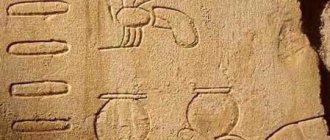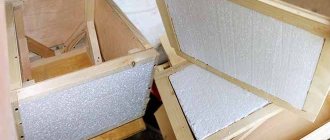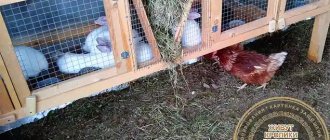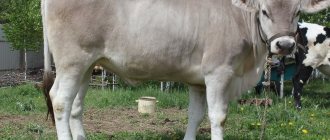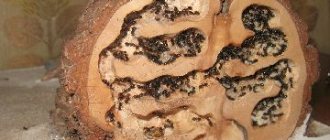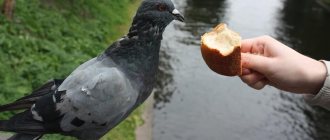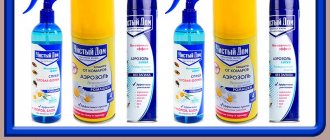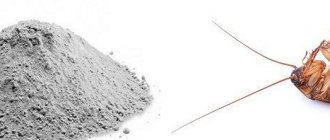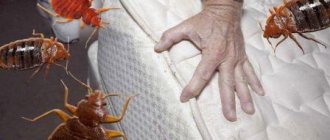As soon as the last snow melted, my father called me to come to the village on a day off to remove the hives that had been wintering in the basement. Entering the room, I saw that 5 families did not survive the winter, having soiled their homes with “diarrhea.” The father explained that the weather changed sharply between frosts and warm temperatures, which affected the health of families. Since I am developing components for thermal insulation, the idea arose of how to apply this knowledge to solve the problem. How to choose the appropriate material?
In the article I will consider some issues of using polyurethane foam (hereinafter referred to as PU foam) in the manufacture of hives:
- Does PPU insulation affect the quality of honey?
- Advantages and disadvantages of PPU?
- What is better for bees: PPU or PPS?
Characteristics of hives
Both PPS and PUF are synthetic materials, which are a fairly dense structure extruded from penoplex, styrodur, and polyurethane. Their advantage from the point of view of design is lightness, ease of processing and maintainability.
How bee hives made of polyurethane foam and polystyrene foam function needs to be precisely understood in order for beekeeping to bring extremely positive results.
Beehive made of polystyrene foam PPS
A polystyrene foam hive weighs about 4 kg when empty (body weight). If compared with a wooden structure, it weighs on average 30 kg, which is significantly different in value. Such a bee house can be purchased at a specialized store or made independently. At the same time, the use of polystyrene foam allows the use of simple production technology that does not require complex tools or special skills.
It is necessary to take into account the negative impact of natural and weather conditions. Therefore, polystyrene foam hives are painted on the outer surface to prevent exposure to ultraviolet radiation, thermal changes, and moisture.
Beehive made of PPU polyurethane foam
Polyurethane hives are houses for insects, which are made from modern material that has a number of advantages. It is precisely because of their positive qualities that they are quite widespread in European countries. This synthetic material is safe for both insects and humans.
But, most often, for protection, the structure is covered with aluminum foil, which can significantly extend the period of operation of the houses.
1.1Beehive bed area of application
The beehive is the most ancient, and therefore it is the most common type of hive. 20 years ago, every beekeeper worked with beehives at least once in his practice. It is believed that the sunbed hive is a good type of hive for a novice beekeeper who loves bees and wants to learn as much as possible about them and learn how to obtain high honey yields.
The sunbed hive is extremely effective in amateur stationary apiaries; nomadic beekeepers are not very fond of sunbed hives for their heaviness, but they note that when using beds with flat roofs, they can be loaded onto a two-story platform, so one platform becomes twice as large during transportation. more than hives of other designs.
The beehive is indispensable in queen-breeding and batch apiaries, and in apiaries specializing in the production of royal jelly.
The hive lounger is designed to contain bees of any breed that are found in Russia; the hive lounger is especially suitable for bees of the Caucasian breed, which are not very good at mastering extensions and magazines, but feel good in beehives.
1.2 Advantages of a beehive
The volume of the hive is sufficient for the development of a large colony strength, and for obtaining a large amount of marketable honey.
- A 24-frame hive allows you to easily place two bee colonies over the winter through a partition, and in a hive you can organize the wintering of the main bee colony and 1-2 layers or nuclei with spare queens, separating them from the main family with a partition. The main family and the cuttings or nuclei will mutually warm each other and will overwinter well.
- The sunbed hive allows, when caring for bees to prevent swarming, to organize layering in one hive and carry out other anti-swarm measures, while in riser hives either another hive or buildings are needed.
- In the summer, by partitioning a 24-frame hive with plywood partitions, one hive can contain 12 cores with spare mats or 6 four-frame layers.
- A well-made beehive is very warm, so in many apiaries beekeepers simply spend the winter in the wild.
- There are no problems with expanding the nest; if in the case of a stand-up hive with the installation of second buildings or magazine extensions, certain tricks are required to force the bees to master them, then in sunbed hives it is much easier to expand the nest.
- In beehives, bees pull foundation very well.
1.3 Disadvantages of the beehive
Among the disadvantages of the sun lounger hive, the following should be noted.
- As a rule, the hive bed is very heavy, so they prefer to use it in stationary apiaries. It should be noted that many beekeepers get around this drawback by using new materials (PPS, polyurethane foam instead of wood), and by the fact that the transportation of the hive is carried out by two people.
- It is impossible to carry out work with bodies in a hive; frame work with bees is required.
- The queen moves freely throughout the hive and therefore the brood can be smeared throughout all the frames. However, this drawback is easily eliminated when using a Hahnemann grid, when the nest is partitioned with a grid and the queen works only in one part of the hive, and the second part of the hive is used for honey collection or when using a Hahnemann grid and placing honey supers.
Advantages and disadvantages
Here are the advantages during operation demonstrated by a polystyrene foam hive:
- This material is resistant to moisture, so mold does not form on it.
- At any time of the year, the PPS hive is well ventilated.
- If any part is damaged, it is easy to replace.
- During operation, the beekeeper will not have to spend extra money.
- Maintenance of structures is easy and quick.
- Bees are less likely to swarm here.
- Such a lightweight structure is easy to move from place to place, as well as to organize nomadic beekeeping.
If we consider polyurethane hives, they have the following characteristics:
- Its own microclimate is effectively formed, allowing insects to develop intensively in the spring.
- Here effective work takes place in which the bee colony rebuilds at least 1 building of foundation.
- In one season, you can collect up to 90 kg of honey from a family.
- There is no need to reduce the nest for the winter, which greatly simplifies the beekeeper’s work.
If we talk about disadvantages, then both a hive made of polyurethane foam and a hive made of polystyrene foam have them. Summarizing all the negative qualities, they can be reduced to the following points:
- The high “traumatic” nature of the material requires a very careful handling of the houses. Any impact will damage the foam and polyurethane foam.
- Poultry and animals are prone to damage to such synthetic material. In addition, rodents are also not averse to trying it on their teeth. All this requires the implementation of measures to prevent damage.
- Another point that may discourage you from using a PPS hive or a hive made of polyurethane foam in an apiary is damage to the material by the insects themselves. They don't mind chewing joints or protruding parts.
- When you need to clean the inner walls of propolis or insect excrement, you will have to think about how best to solve this problem. It is impossible to use a chisel or fire in this case.
- Russian roads, especially outside cities, leave much to be desired. Therefore, transporting such structures can lead to significant damage to them when shaking on a bumpy road.
Taking into account all these features, both pros and cons, each beekeeper decides for himself whether to purchase a hive made of polyurethane foam or polystyrene foam or leave the usual wooden structures in his apiary.
Seasonal work
The normal lifestyle of insects in an apiary requires constant participation and control from the beekeeper. Care does not stop either in winter or in summer. Here are the methods and seasonal work experienced beekeepers use:
- In early spring, check the bottom. This way you can control the temperature and how well the family is developing.
- Inspect the settlement for the presence of parasites. If, for example, varroa mites or any other mites are found, then measures must be taken to destroy them.
- If the hive is clean, then preventive antiparasitic measures are carried out.
- To help expand and strengthen the insect family, it is necessary to rearrange the internal sections and frames.
- In the summer, during intensive honey harvesting, you will have to add an additional section, building the house in height. This is to provide additional frames for the bees to fill with honey.
- If this is not done, then the opportunity to collect a larger number of different types of apiproducts will be missed. And the chances for a full supply of honey for the bee colony for the winter are reduced. This manipulation will allow for complete pumping of honey.
- When the last harvest is carried out, this usually happens no later than mid-August, the depleted combs can be placed in the upper part of the nest. Here they are aged until approximately September. After this, they will need to be stored in a suitable room.
How does the material affect the quality of honey?
Many beekeepers have the opinion that both PPU and PPS have an effect on honey. And they believe that this influence is not positive.
But this is a misconception, since polyurethane foam and polystyrene foam are absolutely safe and non-toxic, both for bees and humans, through the influence of honey as a food product. There is no need to worry that sweet bee nectar, as well as other bee products, will absorb any secretions from such synthetic materials. in fact, this does not happen due to the fact that PPU and PPP do not distinguish anything from themselves.
Helping families in spring
Working with bees in beehives in spring and summer depends on the climatic conditions of a particular area.
If the main honey harvest occurs late - from the beginning to the end of July, it is more correct to maintain one bee colony with a full-fledged and well-sowing “queen”. By the beginning of honey collection, such a nest will occupy at least 20 hundred frames, subject to proper development.
During the early stages of the main honey collection, it is practiced to use helper families, staffed by overwintered “queens” or queens of this year.
The choice of queen in this case also completely depends on the climate, weather in the current year and the strength of the upcoming bribe:
- A strong spring honey flow requires old “queens” kept in the nuc behind a partition in the winter. They are used to replace unproductive females and correct queenless bee colonies, and unused nuclei are used to organize auxiliary nests.
- Young “queens” grown in the same year in layering are more suitable for summer honey collection.
How to make a beehive from PPS with your own hands
You can make hives from polystyrene foam and polyurethane foam with your own hands; it is quite simple and does not require special skills. You can often get by with just one sharp knife.
Preparation of tools and materials
Before work, you need to prepare the following tools and materials:
- Sheets of PPS or polyurethane foam, calculating their required quantity.
- Adhesive for synthetic materials.
- Metal mesh with a cell size of no more than 3.5 mm.
- Self-tapping screws if there is a wooden frame.
- The paint is water-based, as it does not emit harmful substances.
- As additional materials, sheets of plywood or fiberboard can be used if desired.
- Sharp construction knife.
- A ruler and a square for marking, as well as a pencil for making notches.
- Screwdriver for working with wood and chipboards.
- Tray and brush or roller for painting.
- Fine sandpaper to smooth out the wood pieces.
Dimensions and drawings of polystyrene foam hives
It is important to prepare all the necessary detailed drawings before work. They must have all dimensions so that no additional questions arise during design.
The process of assembling PPS hives
Before proceeding directly to the process of assembling the structure, you need to pay special attention to the size:
- The nesting section will have the following dimensions - 690x540x320 mm.
- The magazine has a half frame – 690x540x165 mm.
- The lid, like the bottom, has dimensions of 690x540x80 mm.
These are the parameters that will be optimal for making a compact modular insect house.
Also, do not forget that in some cases, if the material is not extruded correctly enough, you can use molds. True, this option is only suitable for experienced beekeepers who have a large apiary at their disposal, which requires constant updating of the hives.
In all other cases, it is suitable to purchase ready-made sheets of polystyrene foam (PPS, PPU) and cut out the component parts in accordance with the shape and dimensions, followed by fixing the elements with glue in the groove.
Drawing with dimensions 550x320x50 mm.
Assembly
Assembling the hive structure is as follows:
- A pallet with a mesh is assembled; it is advisable to make it from wooden boards. At this stage, take into account that its height should be 120 mm.
- Install a liner to control passage in winter and summer.
- Then the walls of the housings are assembled. The fasteners are assembled using polyurethane foam glue.
- For fixation, the upper and lower trims are made of wooden planks.
- Ventilation is installed in the corners, which should preferably be equipped with a mesh to prevent bees from flying out.
- The last part of the structure is assembled the lid, which must be protected from moisture. Most often, galvanized iron is used for this.
Features of keeping bees in polystyrene foam hives
Before you make or purchase several hives from synthetic material, you need to be aware of the features of beekeeping in them:
- During the summer months, the entrance slot should be open in the same way as the window at the bottom.
- In spring, the window at the bottom is closed.
- Canvas is not used in such synthetic hives. A piece of plastic film is used to replace it.
- The hives must be secured during transportation to avoid damage.
- Organization of wintering does not require bringing the structure into a special wintering shelter. If you do this, there is a high risk that the bees will become exhausted. In order for the winter to pass without loss for insects, it is enough just to move the hives closer to each other and leave them in this state. This will keep you warm.
- With the onset of spring, the hives are placed in their places.
Beekeepers' Tips
It should be noted right away that Nizhegorodets beehives are more suitable for experienced specialists. It is better for novice beekeepers to gain experience on wooden hives, and after accumulating a certain amount of basic knowledge, switch to hives made of polyurethane foam. This is due to the fact that wooden hives do not require such close control over temperature and humidity; they are self-regulating systems: excess moisture formed inside the house is absorbed into the wood and does not cause excess moisture inside it.
However, if the decision to purchase Nizhny Novgorod is nevertheless made, then it is necessary to pay attention to a number of points regarding the correct use of models
If the hives will winter in a hive, then it is recommended to leave the bottom mesh open. To ensure feeding of insects in winter, it is necessary to install a “store” extension
This is especially important when overwintering hives in the field, when feed consumption caused by an open bottom increases significantly. By the way, wooden models equipped with a solid bottom do not need such measures, since there is no significant increase in feed consumption. During wintering, it is recommended to place Nizhegorodets hives on high stands
This is due to the freezing of condensate flowing from the mesh bottom of the house and the formation of an ice block under the hive. Experienced beekeepers advise switching to Nizhegorodets starting with one or two hives. And only after all the subtleties of operation have been mastered, transfer all the bees to polyurethane foam.
However, in fairness, it is worth noting that some experienced specialists are against the use of plastic in the apiary, explaining that insects should be in hives made of natural wood, and the proximity of honey and synthetic materials is unacceptable. Therefore, when choosing Nizhegorodets bee houses, you need to objectively weigh the pros and cons, soberly assessing your capabilities and professionalism.
To learn how to assemble Nizhegorodets hives for wintering, see the video below.
Make hives from PPU polyurethane foam
Before making the enclosures yourself, you need to calculate the required amount of material and only then install the main structures, then complete additional elements. It is important to follow the technological recommendations and markings on the drawings in order to do everything correctly during installation and cutting.
Dimensions and drawings of a hive made of polyurethane foam
The overall dimensions of the PPU or PPS hive are the following parameters:
- In the top view, each body is a square with a side of 53 cm.
- The thickness of the main section is 155 mm.
- The thickness of the side walls should be maintained at 40 mm.
- As for the ventilation holes, they are made along the bottom of the wooden frame.
- It is advisable to take into account that the bottom should be welded into a wooden frame.
Assembly of the PPU hive
The assembly process consists of the following steps:
- The drawing is transferred to cardboard or thick paper and each element is cut out separately.
- Apply it to a sheet of synthetic material and cut it.
- Each cut piece must be sanded to ensure that there are no burrs or uneven parts. This is important, since subsequently the parts must fit snugly against each other.
- Rebates are installed along the back and front walls, which will allow you to install the frame.
- The finished elements are glued together.
- For reinforcement, they are fixed with self-tapping screws.
- Recesses for handles are cut out along the outer surface along the side walls. True, they can be performed in any other convenient way.
- It is important to secure it with straps after gluing. This will allow the structure to remain in the specified dimensions and not move apart.
- Don’t forget to make a tray that will slide out for easy cleaning.
- After this, the belts are removed.
- The ventilation holes are covered with a metal mesh.
- The folds must be secured with steel angles.
- After this, the outer surface is painted with water-based facade paint.
Preparing parts
To create hives from polyurethane foam you will need a set number of components. These parts will allow the structure to fully function:
- body - the main part of the hive that protects the bee colony;
- bottom – 3 elements (protection against ticks, tray and bottom). For the mesh against small arthropods, use a die cut coated with zinc. Cells less than 3 mm in size;
- pallet - materials for manufacturing: plywood, PMMA (organic glass, plexiglass), galvanized sheets. The element is necessary to monitor the health of the bee colony. It accumulates death and mites, by which the beekeeper can judge the strength of the family and the degree of infestation. When moving, the pallet is removed;
- cover - a part to protect the bee house;
- hundred frames – made in standard sizes.
For cutting and assembling molds for casting beehives made from polyurethane foam, metal with a thickness of at least 6 mm is taken. Cutting is done using a grinder. The sheet metal is bolted to the prepared table. It is then carefully cut through, but not to its full thickness. This is necessary for less heating. After passing along the entire length, the finished form breaks off. The edges are cleaned.
Beekeepers' opinions
Most beekeepers who have tried hives made of EPS (extruded polystyrene foam) or PU foam come to the following opinion regarding their operation:
- With this design it is easy to increase the bee colony.
- In hot regions, this design helps avoid overheating of the family.
- Due to the fact that the surface is quite smooth, it is not easy to care for. But still, it is necessary to think about how best to clean the inner walls from adhering bee diarrhea and other sticky parts.
Using the bottom
The use of the bottom is very rational. On the one hand, the removable option allows:
- Promptly clean up all fallen elements formed during the life of insects.
- Carry out additional antiparasitic treatment without much effort and disassembling the entire structure.
This is how the hygienic function of such a design is achieved.
On the other hand, the specific bottom can be removed in the hot season and only a mesh element can be left at the bottom of the structure. This allows you to achieve a high level of aeration and cooling of the inside of the house by providing fresh air. It is this state, when ventilation is enhanced, that allows the bees to concentrate on extracting honey, rather than clustering along the front wall of the house.
With minimal disruption to the rhythm of insect life, you can perform all the necessary manipulations that a beekeeper must carry out throughout the year to care for his apiary.
Advice from experienced beekeepers
Multi-building pavilion breeding of bees has features, knowledge of which will help novice beekeepers avoid mistakes.
Experienced beekeepers with this method of keeping advise:
- refrain from installing the hive directly on the ground, since low temperatures in winter and high temperatures in summer can negatively affect the condition of the bee family;
- When making a structure with your own hands, take care of its insulation in advance. At the same time, use not cotton wool as an insulation material, as was done before, but, for example, expanded polystyrene;
- install the house in areas protected from wind and direct sunlight. Open areas are not suitable for installation of structures, as they can increase the risk of overheating or hypothermia of winged insects;
- It is imperative to make a stand for the hive, which will avoid direct contact of the structure with the soil, and will also significantly facilitate its transportation;
- work to expand the nest in the spring should be carried out in warm weather, since the brood located in the lower building may catch a cold.
A multi-section hive is considered an alternative option for keeping a bee family. Compared to traditional designs, it has several key advantages: it facilitates the care of insects, increases the productivity of bees and reduces the cost of honey products. Similar houses can be purchased in specialized stores, but more often, beekeepers prefer to make hives with their own hands.
